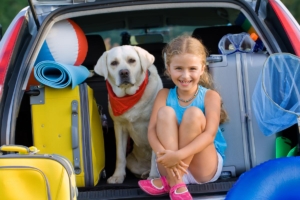 Whether you leave Rover home or bring him on vacation, plans for your trip should be made well in advance.
Whether you leave Rover home or bring him on vacation, plans for your trip should be made well in advance.
If Rover is going on vacation, you must consider his personality. If you are not sure about his personality, or if he behaves differently with you than with other people, ask a friend (or several) to give an objective opinion. Here are some questions to consider:
Is your pet friendly?
Is he (she) over-friendly? Sometimes a large over-friendly dog appears aggressive and scares people.
Does your dog jump up on people? If so, he (she) can easily knock down and injure a small child.
Is Rover extremely territorial? If you are planning a camping trip, remember that campsites are located close to each other. There are no walls or fences that separate adjacent campsites.
Does your dog bark when he (she) hears strange noises? When away from home, many new noises are considered “strange” noises. Barking is extremely annoying to neighbors.
Does Rover obey your commands? Does he wander from home? Spending an entire day (or several days) chasing after Rover is no fun.
Planning
If you would like to bring Rover on vacation, planning is necessary.
Rover must be current on all vaccinations, including Rabies. If you do not have vaccination certificates, call your regular veterinarian and request copies. If you are traveling to another state, you may want to call your state veterinarian’s office. Your state veterinarian may provide you with additional information or requirements that are necessary for traveling with Rover.
Make sure you have an adequate supply of heartworm medication as well as a supply of any other medication that Rover is taking. If Rover is taking prescription medication, carry a copy of the prescription. A copy of his (her) medical record may be useful as well.
A strong collar (and leash) with identification tags is necessary. The tags must have an address and phone number. Since you are on vacation, the phone number should be a friend’s number or the phone number of your veterinary hospital. A second collar with an additional set is useful if the original is lost.
Rover’s picture should be in your wallet. A current photo of your dog comes in handy if he/she gets lost.
A travel crate or kennel (well ventilated) is necessary.
A large bag of Rover’s food may be easier to purchase at home than on the road. If he (she) is eating a special or prescription diet, you may have a difficult time purchasing this particular brand away from your home.
Lodging
Motels, inns, and campsites must be called in advance. Many accept pets, some welcome pets, and most refuse pets. Some motels, Inns, and campsites have limited space for families with pets. These are often booked before tourist season even begins. Make these reservations early!
Check with your local American Automobile Association for motels, inns and campgrounds that accept pets. The Internet is an excellent method for finding lodging as well.
There are many books and pamphlets entitled Traveling with your pet. An inexpensive and useful publication can be purchased from Quaker Oats. It is available for $1.50 from Quaker Oats Publishers, Professional Services, P.O. Box 877, Young America, MN, 55399.
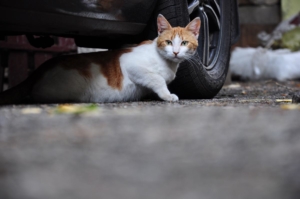 Antifreeze and windshield washer fluids contain a product called ethylene glycol. Ethylene glycol is sweet and has a taste that is attractive to both dogs and cats. Just a small amount of antifreeze consumed by a pet can cause irreversible kidney damage, leading to coma and death.
Antifreeze and windshield washer fluids contain a product called ethylene glycol. Ethylene glycol is sweet and has a taste that is attractive to both dogs and cats. Just a small amount of antifreeze consumed by a pet can cause irreversible kidney damage, leading to coma and death.
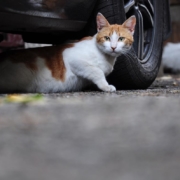

 On a recent visit, Debby’s sister tried to talk her into adopting a kitten. Debby loves animals, but didn’t really need another cat, and she had her sales resistance at a high level. She left for the drive back to Clarkston without a new kitten… At least she thought.
On a recent visit, Debby’s sister tried to talk her into adopting a kitten. Debby loves animals, but didn’t really need another cat, and she had her sales resistance at a high level. She left for the drive back to Clarkston without a new kitten… At least she thought.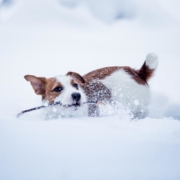
 The cold months present a problem for outdoor dogs. During the winter, outdoor pets are particularly susceptible to dehydration. Since small bowls of water freeze quickly, twice-a-day watering is not sufficient. We recommend a large, deep, plastic bowl, since a large deep bowl of water freezes more slowly than a small, shallow one. A plastic bowl is more efficient than a metal one. Metal has a tendency to loose heat more quickly. In subzero temperatures or situations where the water cannot be changed several times a day, a livestock water bucket heater is useful.
The cold months present a problem for outdoor dogs. During the winter, outdoor pets are particularly susceptible to dehydration. Since small bowls of water freeze quickly, twice-a-day watering is not sufficient. We recommend a large, deep, plastic bowl, since a large deep bowl of water freezes more slowly than a small, shallow one. A plastic bowl is more efficient than a metal one. Metal has a tendency to loose heat more quickly. In subzero temperatures or situations where the water cannot be changed several times a day, a livestock water bucket heater is useful.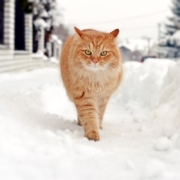
 During the winter months, dogs’ paws are often swollen and irritated. Examination of the interdigital (between the toes) area reveals red, inflamed skin. This condition is often very painful, causing the dog to walk with a limp.
During the winter months, dogs’ paws are often swollen and irritated. Examination of the interdigital (between the toes) area reveals red, inflamed skin. This condition is often very painful, causing the dog to walk with a limp.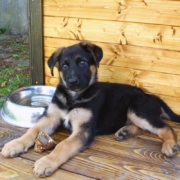
 Most dogs can live outdoors, even during the winter months. Some breeds do not tolerate the cold very well and should not live outdoors. (Whippets, Italian Greyhounds, chihuahua, etc.) These dogs cannot tolerate the cold for long periods of time and develop hypothermia very quickly. Large dogs living outdoors should have a cozy, insulated dog house. The house should not be too large, just large enough for your dog to stand up and turn around. A dog house that is too large will lose heat quickly. The house can be homemade; however, new insulated plastic models are available and reasonable in price.
Most dogs can live outdoors, even during the winter months. Some breeds do not tolerate the cold very well and should not live outdoors. (Whippets, Italian Greyhounds, chihuahua, etc.) These dogs cannot tolerate the cold for long periods of time and develop hypothermia very quickly. Large dogs living outdoors should have a cozy, insulated dog house. The house should not be too large, just large enough for your dog to stand up and turn around. A dog house that is too large will lose heat quickly. The house can be homemade; however, new insulated plastic models are available and reasonable in price.
 Winter is a difficult time for pets. Outdoor animals need extra care in order to cope with the cold weather. Special attention should also be paid to older animals, young puppies and animals with short coats.
Winter is a difficult time for pets. Outdoor animals need extra care in order to cope with the cold weather. Special attention should also be paid to older animals, young puppies and animals with short coats.
 Whether you leave Rover home or bring him on vacation, plans for your trip should be made well in advance.
Whether you leave Rover home or bring him on vacation, plans for your trip should be made well in advance.
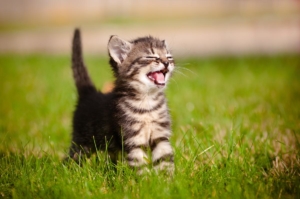 The most common cause of poisoning in dogs and cats is from insecticides. Presently there are more than 25,000 insecticides registered for use in the United States. Insecticides used to control fleas on pets cause the majority of poisonings.
The most common cause of poisoning in dogs and cats is from insecticides. Presently there are more than 25,000 insecticides registered for use in the United States. Insecticides used to control fleas on pets cause the majority of poisonings.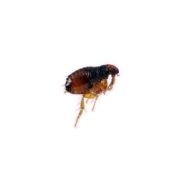
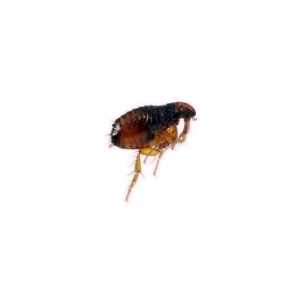 Fleas are magical creatures that have been annoying animals for over 60 million years. With their flattened bodies and three pairs of powerful legs, they are magnificently adapted for jumping. The average flea is capable of jumping more than 100 times its own height. It is extremely easy for a flea to jump from one pet to another.
Fleas are magical creatures that have been annoying animals for over 60 million years. With their flattened bodies and three pairs of powerful legs, they are magnificently adapted for jumping. The average flea is capable of jumping more than 100 times its own height. It is extremely easy for a flea to jump from one pet to another.
 Herbicides (weed killers), insecticides, rodent poison, and slug and snail bait are some of the toxic chemicals used outdoors that may be harmful to your pet. Each summer, insecticides and herbicides poison thousands of pets. When using these chemicals, follow the manufacturer’s directions carefully. Make sure that all receptacles and containers are thoroughly washed and out of reach of your pet. Runoff or puddles created from spraying these products should be thoroughly diluted. Do not allow pets in the yard while spraying these products and keep them out of the yard for 3-4 days afterwards. Often, pets walk on surfaces covered with herbicides and become intoxicated after cleaning or licking their paws.
Herbicides (weed killers), insecticides, rodent poison, and slug and snail bait are some of the toxic chemicals used outdoors that may be harmful to your pet. Each summer, insecticides and herbicides poison thousands of pets. When using these chemicals, follow the manufacturer’s directions carefully. Make sure that all receptacles and containers are thoroughly washed and out of reach of your pet. Runoff or puddles created from spraying these products should be thoroughly diluted. Do not allow pets in the yard while spraying these products and keep them out of the yard for 3-4 days afterwards. Often, pets walk on surfaces covered with herbicides and become intoxicated after cleaning or licking their paws.